MESSAGE OF HIS HOLINESS POPE FRANCIS FOR THE TWENTY-SIXTH WORLD DAY OF THE SICK 2018
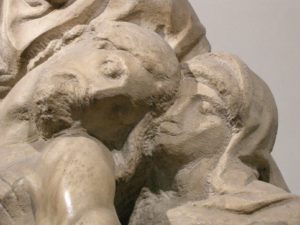 Mater Ecclesiae: “Behold, your son… Behold, your mother.
Mater Ecclesiae: “Behold, your son… Behold, your mother.
And from that hour the disciple took her into his home.” (Jn 19:26-27)
Dear Brothers and Sisters,
The Church’s service to the sick and those who care for them must continue with renewed vigour, in fidelity to the Lord’s command (cf. Lk 9:2-6; Mt 10:1-8; Mk 6:7-13) and following the eloquent example of her Founder and Master.
The theme for this year’s Day of the Sick is provided by the words that Jesus spoke from the Cross to Mary, his Mother, and to John: “Woman, behold your son … Behold your mother. And from that hour the disciple took her into his home” (Jn 19:26-27).
The Lord’s words brilliantly illuminate the mystery of the Cross, which does not represent a hopeless tragedy, but rather the place where Jesus manifests his glory and shows his love to the end. That love in turn was to become the basis and rule for the Christian community and the life of each disciple.
Before all else, Jesus’ words are the source of Mary’s maternal vocation for all humanity. Mary was to be, in particular, the Mother of her Son’s disciples, caring for them and their journey through life. As we know, a mother’s care for her son or daughter includes both the material and spiritual dimensions of their upbringing.
The unspeakable pain of the Cross pierces Mary’s soul (cf. Lk 2:35), but does not paralyze her. Quite the opposite. As the Lord’s Mother, a new path of self-giving opens up before her. On the Cross, Jesus showed his concern for the Church and all humanity, and Mary is called to share in that same concern. In describing the outpouring of the Holy Spirit at Pentecost, the Acts of the Apostles show that Mary began to carry out this role in the earliest community of the Church. A role that never ceases.
THE PROVINCE OF BRAZIL
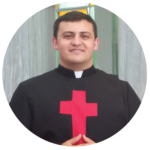


THE PROVINCE OF NORTH ITALY, SEVESO
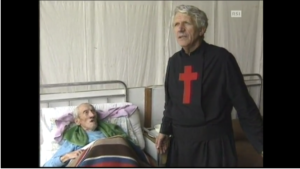



On Tuesday 19 December 2017, at the ‘Casa Betania delle Beatitudini’ Community of Seveso on the outskirts of Milan, Msgr. Mario Del Pini, the Archbishop of Milan, presided over the solemn liturgy of prayer for the opening of the cause of beatification and of canonisation of the Servant of God, Brother Ettore Boschini (1928-2004), a Camillian religious.
The ‘formal-juridical-canonical’ moment of the opening of the inquiry on the fame of holiness of Brother Ettore was organised by Msgr. Ennio Apeciti, the episcopal delegate for the causes of saints; by Don Marco Gianola, the promoter of justice; by Don Simone Lucca, a notary and actuary; and by Dr. Consolini, the postulator of the cause.
The large chapel dedicated to Our Lady of Fatima, which was built by Brother Ettore himself, welcomed the civil dignitaries of the local area; the parish priests of the deaconate of Seveso with various representatives of their Christian authorities; many Camillian religious, above all from the Camillian Province of North Italy – we were received with the simple and sincere style of Sister Teresa Martino who continues the work created by Brother Ettore for providing help to poor, very poor and socially excluded people…; by volunteer workers of this institution; and above all by people who inside those Spartan walls have found a refuge, food, but above all the experience of a ‘home’ and a ‘family’…
The mayor of the city of Seveso, in his speech of welcome to those who were present, observed that his community had been marked in recent history by painful facts, such as the poisoning by dioxin (of about forty years ago) which produced death, suffering, pollution…and thus sadness and a lack of confidence: the presence of Brother Ettore and his community of welcome, the ‘Casa Betania delle Beatitudini’, helped to redirect the widespread sensitivity of the citizens towards those values of humanity and sharing that make every man and every woman better. With great clarity, the Archbishop referred to the meaning of the liturgical and canonical moments that we experienced: the opening of the ‘process about the life, the virtues and the fame of holiness in ordinary matters and in extraordinary facts in general,’ of Brother Ettore.
Still today, why do we narrate the stories of the saints? Whereas we tell stories to children to help them to overcome their fears and to help them sleep and dream, the Church continues to remind adults of the stories of saints for the opposite reason: to ‘wake them up’, to shake them, and to make them passionate about God and the needs of men and women.
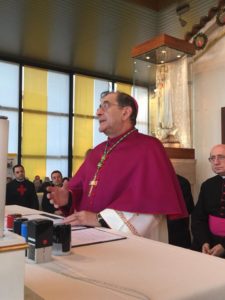



The Church turns the lamps to certain men and women (saints and blesseds) in order to remind us that ‘good is possible’, that ‘good is practicable’, and that ‘good can be done by everybody’.
In addition, Brother Ettore, with his biography of a Camillian consecrated Christian, also reminds us that the ‘secret’ by which to nourish the flame of charity, where there is a risk that very hard work, and interior and exterior forms of resistance, will weaken the impetus and the passion of love and charity: prayer, adoration of the Eucharist, and genuine and filial intense devotion towards the Virgin Mary. When worry about resources and/or structures runs the risk of suffocating the immediacy of help, and when long periods of time run the risk of suffocating the spontaneity of love, interior life, spiritual life, can constantly reactivate a circle of ‘heroic’ virtues and achieve authentic and frank witness to the love of God for ‘every’ man and for the ‘whole’ man.
Prayer for the Beatification of the Servant of God Brother Ettore Boschini
(with the ecclesiastical approval of 23.02.2010)
Lord Jesus,
Who said to your disciples:
“Love one another as I have loved you”,
You, who brought forth amongst us Brother Ettore,
So that by his example of joyous charity,
He would stimulate us to imitate you,
God of charity and peace,
Give us his same goodness,
His untiring readiness to help,
His constant amazement,
When contemplating your countenance,
Your daily taking care,
Of each one of us.
Grant that, like him,
We, too, can remember,
That you call us ‘friends’,
In order to make us capable every day,
Of being neighbours to every man,
Above all if poor, sick, marginalised.
Grant, O Lord, if you so wish,
That Brother Ettore soon may be called blessed,
That he may pray for us,
And that he may obtain for us the grace that we ask you for, with faith.
TORINO – MADIAN
Instruction, health, reconstruction: the priorities of the Madian community.
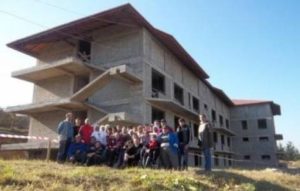






THE DELEGATION OF TAIWAN



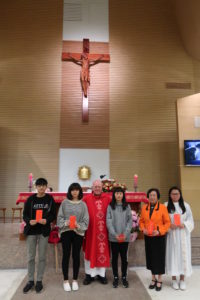


THE PROVINCE OF SICILY AND NAPLES
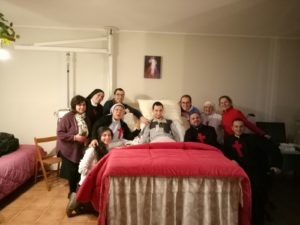


On 10-17 December, at the ‘S. Maria Stella del Mare’ Parish of Manfredonia, a parish mission took place for sick people that was animated by Camillian religious, Daughters of St. Camillus, and women Ministers of St. Camillus, accompanied by a number of young people from Rome and Sicily who work with them. This was a very intense and beautiful week, strongly wished for by the parish priest, Don Alessandro Gambuto, together with his team of extraordinary ministers of communion and pastoral workers. The Archbishop, Msgr. Michele Castoro, sent a message of blessing and gratitude to the missionaries, to the parish priest and to the whole community of the ‘Star’ Parish.
MESSINA – World Migrant Day
The Archbishop of Messina, Msgr. Giovanni Accolla, chose to celebrate the World Migrant Day (14 January 2018) with the whole of his diocesan community at our ‘St. Camillus’ parish of the Camillian nursing home of Messina.
CENTRAL AFRICAN REPUBLIC
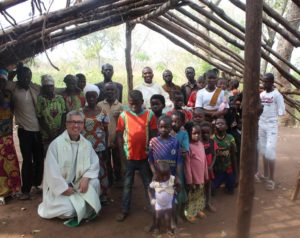


Since Pope Francis’ visit in this country in November 2015, fresh winds of changes in the church and the society as a whole are making inroads. “Right now in my country, everyone will tell you the same thing. Be they Muslim, Protestant, Catholic, everyone! They will say the same thing: Pope Francis brought a new breath of fresh air to our country and individual lives. […] From the moment Pope Francis set foot on CAR, right up to today, I really can tell you that there is a different atmosphere in our land.” Archbishop Nzapalainga of Bangui told these in an interview with Vatican radio.
The Camillians in Bossemptele made a big impact in the international media when the war broke out between the Seleka and the anti-balaka on March 2013. The hospital and the parish became the refuge of the thousands of Muslims who have been targeted by the anti-balaka forces. This reminds the Camillian Martyrs of Charity who died in the war serving the soldiers who were wounded and infected with contagious diseases between 1759-1743. The call to the fourth vow is indeed fully alive and called forth today in the various situations where the lives of the most vulnerable are in danger.
The hospital is located about 385 km from the capital city of Bangui, and the nearest ill-equipped hospital in Bozoum is about 85 km away from Bossemptele. The Camillian hospital is serving then thousands of population whose access to health services is almost nil before this hospital.
AGENZIA FIDES – THE CAMILLIANS: NEW SERVICES OF MEDICAL CARE IN A VERY POOR COUNTRY
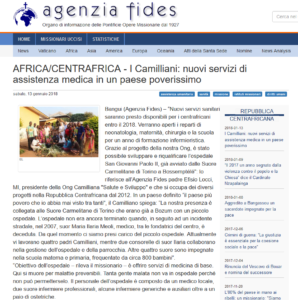


THE PROVINCE OF SPAIN
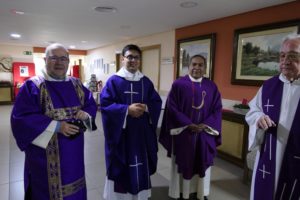


Priestly ordination and first Holy Mass of Franklin Fuentes |
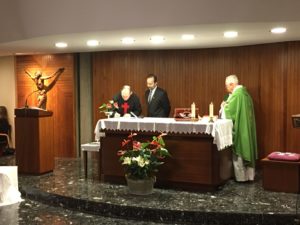


THE PROVINCE OF INDIA
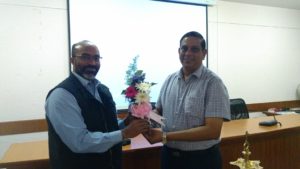


THE PROVINCE OF BURKINA FASO
The Community of FLORENCE



The Community of TENKODOGO
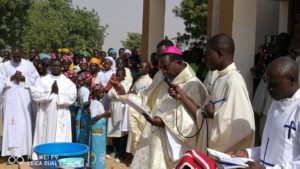


The Community of OUAGADOUGOU
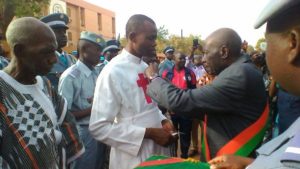


THE VICE-PROVINCE OF BENIN-TOGO
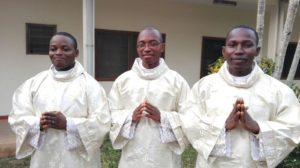


RULE FOR FORMATION OF THE ORDER OF CAMILLIANS GENERAL GUIDELINES



Pope Francis, Conversation with Superior Generals (29 November 2013).
Through this updated version of the Rule for Formation of the Order of Camillians: General Guidelines, we have responded to the request of the LVII Extraordinary General Chapter (Ariccia-Rome, 16-21 June 2014) which identified – in the context of the Camillian Project: Towards a Creative and Faithful Life. Challenges and Opportunities – the area of formation and the promotion of vocations as being one of the three priorities of the Order for the six-year period 2014-2020. One of the pre-requisites in this strategic and vital sector of the life of the Order is an updating of the guidelines for formation: ‘to explore the reality of formation, taking into account the frequent abandonment of young men and to assess the need to work by geographical and linguistic areas’.[1]
The previous edition of the Rule for Formation sprang from a long process of consultation and needed a long itinerary in terms of time to move towards its approval by the General Consulta. Fr. Angelo Brusco, the Superior General, summarised this achievement in the following way: ‘After the first draft, which took place in 1995 and was presented to the General Chapter that was celebrated in the same year, it was believed advisable for the document to be re-examined and then sent to the Provinces and Provincial Delegations for a period of experimentation to be continued until the celebration of the General Chapter of 2001’.[2]
Almost two decades have passed and many things have changed, both in the world and in the Church, and we are called to read these new signs of the times in a prophetic key. We are living our history not in an epoch of change but in an authentic change of epoch.
In this sense it is not easy to interact with the culture of today’s young people who are defined as ‘millennials’; it is not so easy to respond to their troubles and to their search for the existential values that they yearn for, offering to them consecrated life as a lifestyle that is congruous with their expectations!
Over the last two decades, the life of the Church has been shaped by three Supreme Pontiffs: St. John Paul II (1978-2005), Benedict XVI (2005-2013) and Francis (elected in 2013). At an ecclesial level, we have celebrated the year dedicated to consecrated life (2015), the extraordinary year of mercy (2015-2016), two synods of bishops on the family, and in 2018 the synod of bishops on Young People, the Faith and Vocational Discernment.
Various guidelines have been drawn up in an updated form by the Holy See for formation for consecrated life and for priestly life, responding to the renewed challenges of the times. In continuity with this new cultural and ecclesial context, the need emerged to revise the Rule for Formation of the Order as well.
In order to address the challenge of the updating of this important document, the secretariat for formation carried out a prior survey amongst the religious of the Order, calling for a contribution by all the religious involved in formation and pastoral care for vocations. The initial results of this survey were rather superficial and also, in part, discouraging, given that only a few religious listened with suitable participation to this appeal and offered their feedback.
Secondly, an international meeting of Camillian providers of formation and animators of vocation was held in Rome (12-18 October 2017), with the presence of about fifty participants who expressed all of the geography of the Camillians in the world. They thought, and exchanged views, about the subject ‘The Promotion of Vocations and Camillian Formation in Harmony with the Signs of the Times and New Needs to Construct a Future of Hope’.
A principal goal was pursued at this international meeting – ‘in communion, we will seek an updating and a revitalisation of our visions and actions and instruments in the area of the promotion of vocations and Camillian formation’ – together with specific goals: to update the Rule for Formation of the Order; to diagnose and learn about certain characteristics of the young people of today in a globalised world; to take interculturality into account in the process of the promotion of vocations and formation; to facilitate exchange and thought about experiences in the promotion of vocations and formation (signs of hope, opportunities and challenges); and to foster knowing each other and fraternal life together amongst the participants. The final assessment of this meeting was very positive and reshaped the discouraging initial impression, producing a substantial appreciation of what had taken place.
Subsequently, the General Consulta, after considering all the contributions that had emerged during this international meeting, and making some important changes, approved the definitive text.
I would like to express especial gratitude to Fr. Laurent Zoungrana, the Vicar General and member of the General Consulta responsible for formation in the Order, who coordinated this demanding and sensitive pathway.
In order to honour, in part, our debt to history, I would also like to pay tribute to Fr. Simone Skawinski (who was a member of the General Consulta for the six-year period 1989-1995) and Fr. Laurent Zoungrana himself (who was a member of the General Consulta during the six-year period 1995-2001) who led the secretariat for formation during the two mandates of the Superior General Fr. Angelo Brusco (1989-2001) and were leading figures in the drawing up of the Rule for Formation that was published in the year 2000.
We hope that these guidelines for our Camillian formation (initial and ongoing formation, the formation of those providing formation and those engaged in the promotion of vocations) will be read, valued, thought about, and above all followed and implemented.
We hope that they will be a real GPS, capable of giving a direction in the inspiring, drawing up and/or revising the instruments of formation of the Provinces, Vice-Provinces and Delegations of the Order.
May the Lord of the harvest (Lk 10:2), through the intercession of the Immaculate Virgin and our holy father Camillus, sustain us and help us always to be witnesses to hope and joy in living and in serving, as true Samaritans in the promotion of vocations and in Camillian formation!
DIARY OF THE SUPERIOR GENERAL AND THE GENERAL CONSULTA
On 4-25 February 2018, Fr. Leocir Pessini and Fr. Aris Miranda will visit our religious of the Camillian communities of the Philippines.
The Conversion of St. Camillus
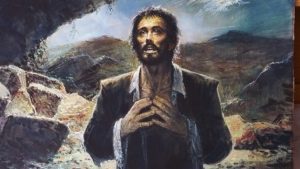


The overwhelming experience that overwhelmed our Founder must be renewed in all those whom God has called to share in the mission of charity. The new path on which the Spirit has pushed them can only begin with the same experience with which God outlined the new pathway to which He directed their Founder.
For this reason, we will try to explore some directions that emerge from the event of the conversion of our Father and Teacher which impose themselves on our thoughts.
Camillus had gone up to the religious house of the Capuchin friars to perform a humble errand entrusted to him by the friars of Manfradonia: the donkey was carrying a ‘load of pasta to be changed into a great deal of wine’. Camillus, on the other hand, carried with him the burden of his twenty-five years of life, during which he had repeatedly rejected in a frivolous way the appeals of God, and they had been many in number: the death of his father Don Giovanni who had made him a mercenary; a wound at the top of his foot which began to trouble him and humbled him; a rather sudden vow to take off his soldier’s uniform which he had just put on and to put on the habit of the Franciscans; his meeting with his uncle who was a Capuchin; his unsuccessful experience working at St. James’ Hospital in Rome; the shame of begging to which he had been reduced by his vice of gambling; and the hard work of being a house servant to which the pendants of his ragged military uniform could not give lustre.
He had accepted that job as something different. However, now he was in another religious house that was not very dissimilar from that of Manfredonia and he did not have any prospects: closed to all the appeals of God he could not imagine that during the next fourteen hours of his life everything would change. With great respect and humility, we will try to follow the steps that would lead Camillus onto the way of the Lord.
Now he was in that oasis of peace of the friary and after carrying out his errand he looked down from Gargano onto the distant panorama of the town of Manfredonia to which he planned to return at first light.
SAINT CAMILLUS de LELLIS
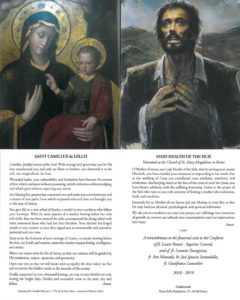


With courage and generosity, you let His love transformed you
and with no filters or barriers, you showered it to the sick, the marginalized, the least.
Wounded healer, your vulnerability and limitations have become the sources of love which embraces without possessing, which welcomes without judging, and which gives without expecting any return.
As a blazing fire, passion has consumed you and make you a revolutionary and a creator of new paths: Love which surpassed rules and laws and brought you to the way of charity.
You gave life to a new school of charity, a model to your confreres who follow your footsteps. With the same passion of a mother bowing before her only sick child, they too have assisted the sick; accompanied the dying; dried with tears; ransomed those who had lost their freedom. Your charism has forged people to any corners: to you; they regard you as unattainable and attractive, perennial and ever new.
Keep us by the freshness of your message of charity, to remain bowing before the sick, our Lord’s and masters, aware that charity requires feeling, intelligence, and action.
Warm our hearts with the fire of mercy, so that our mission will be guided by His tenderness, respect, openness, and generosity.
Open our eyes so that we will know with sympathy the time where we live and scrutinize the hidden needs in the wounds of the society.
Finally, supported by your thousand blessings, we may remain faithful not only during the bright days, fruitful and successful, even in the dark, dry and failure. Amen.
DECEASED RELIGIOUS
‘See, now they vanish, the faces and places, with the self which, as it could, loved them. To become renewed, transfigured, in another pattern’ (T.S. Eliot).
FR. ETTORE NICOLODI (1926 – 2018)
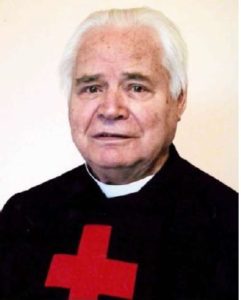


After temporary summer posts at Cremona and Predappio, in the autumn of 1952 he became vice-master of novices at Verona S. Giuliano. On 22.08.1953 he left for Brazil. For two years he exercised ministry at the S. Luiz de Jaçana Sanatorium and taught Latin and geography to the seminarians of the seminary of Jaçana. In the same seminary he then taught moral theology and was appointed financial administrator of the house. In January 1961 he moved to the house of Iomerè (S. Caterina) where he taught Latin to the seminarians and helped with ministry in the chapels of the parish. During that period he planned and carried out a radical transformation of the seminary. In 1964 he returned to San Paolo, going to Villa Pompeia, and for two years he was the director of the printers and helped the financial administrator of the Province. In 1966 he was entrusted with the project of the construction of the novitiate in Pinhais (Curitiba). In 1969 he became chaplain at the Santa Casa di Sao Paulo and attended the course in hospital administration at the University of Hygiene and Public Health. In 1970 he became chaplain at the Hospital of the Public Servant
of San Paolo and continued to attend the same course at the same university, subsequently being awarded a diploma in hospital administration.
FR. FRANCESCO SPAGNOLO (1931 – 2018)
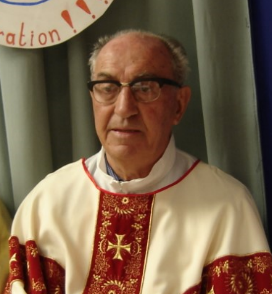


According to those in whom he confided, Fr. Francesco greatly wished for a missionary life during those epic years when the Chinese mission in Yunnan had been active for a decade before being exiled to another place in the Far East. But his proven application to his studies and his self-discipline made him more suited in the eyes of his Superiors to teaching, which at that time was done within the Institute itself. Indeed, after a summer when he had a replacement position at the chaplaincy of Pavia, on 14.09.1955 he was sent to the house of S. Giuliano as a teacher of Latin and Greek to the professed students, with an enrolment at the Faculty of Ancient Humanities (‘the fine humanities’) at the University of the Sacred Heart in Milan: he was a teacher and a student at one and the same time until he was awarded his degree on 04.07.1961. His first principal service was to accompany ministry at the ‘Little Shelter’ Work in Parona, a neighbourhood of Verona. His literary education also led to his being appointed a member of the Provincial Committee for the Revision of the Constitution of the Order for the two-year period of 1966-1968.
BR. GIOVANNI BATTISTA STELLA (1931 – 2018)
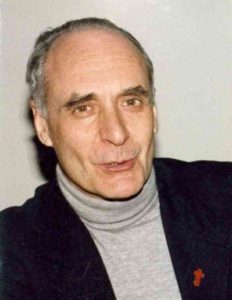


On 3 August 1950 he went to Venice Lido to the health-care institution of Alberoni. On 19 October 1955 he moved to Cremona to go to the Scuola Convitto for Professional Nurses: he received his diploma on 20 June 1957. On 5 October 1957 he was sent to the surgery department of the St. Camillus Nursing Home in Milan, his new community.
After ten years, on 20 June 1967, he was sent as a nurse to the third floor of the house of Venice Alberoni. On 6 July 1969 he was awarded the diploma of charge nurse at the St. Joseph Nursing Home in Milan, after being a commuter travelling between Venice and Milan. With this qualification, he was made a member of the staff of the newly-founded St. Pius X Nursing Home of Milan, to which he was transferred on 31 October 1969. He would spend a long period in Milan which was interrupted only once, in 1980, to respond to a humanitarian emergency: three months in Bangkok (Thailand) in the refugee camps for refugees from the war in Laos.
FR. BERNARD BLASICH (1933-2018)
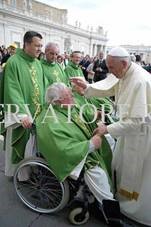


He attended Marquette University in Milwaukee, Wisconsin from 1958 to 1959, St. Frances Major Seminary in Milwaukee, Wisconsin from 1959 to 1962, and then was sent to St. Columban’s Major Seminary in Milton, Massachusetts where he took philosophy courses until 1963.
He received his Bachelor’s of Theology degree from College Pontifical Gregorian University in Rome in June of 1967.
He became a Chaplain at St. Joseph’s Hospital in Milwaukee, Wisconsin and worked there from August 1968 to November 1970.
Fr. Bernard took his temporary vows at Durward’s Glen in Baraboo, Wisconsin on September 8, 1961. He took his final vows on November 4, 1964 in Whitinsville, Massachusetts, and on June 24, 1967 was ordained as a Camillian Priest in Marino (Rome), Italy.
From August 29, 1956 to September 12, 1958 he was enlisted in the United States Army.
He was commissioned in the United States Navy on April 8, 1971 and was associated with the Military Apostolate. During this time, he had many and varied assignments both in the United States and overseas. He earned the esteem of personnel with whom he was associated in the Armed Forces of the United States of America.
Between September, 1980 to December 1981, he carried out a Chapel assistance program in favor of the communities in the Naples – Avellino – Salerno areas that were hit by a terrible earthquake in November 1980.
He served as a chaplain at the Navy Hospital at Great Lakes to pursue graduate studies in theology at St. Mary’s of the Lake Seminary in Mundelein, Illinois.
Now they live in Christ whom they met in the Church, followed in our vocation, and served in the sick and the suffering. Trusting that the Lord, the Holy Virgin our Queen, St. Camillus, the Blessed Luigi Tezza, the Blessed Giuseppina Vannini, and our deceased religious brothers and sisters, will welcome them in their midst, we commend them in our prayers, remembering them with affection, esteem and gratitude’.
PRAYER FOR THE VICTIMS OF ALL TYPES OF DISASTERS
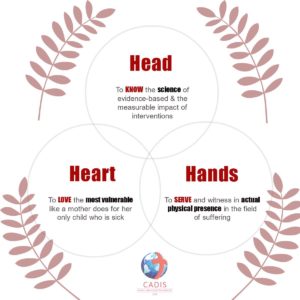


God in heaven, who has created and who preserves every existence,
You know all of our sadness and our suffering. May all the victims of all types of disasters be welcomed in your peace! Receive, we pray, in your mercy, our very many brothers and sisters buried by the forces unleashed by nature. Lead them to your home!
Comfort the pain of so many families, dry the tears of so many brothers and sisters, offer protection to the loneliness of so many orphans. Instil courage into everyone so that pain is transformed into a journey of growth and hope.
Generate in the hearts of Christians and all men and women of good will the wish to act so that the wounded and those who suffer because of these calamities experience the comfort of fraternal solidarity.
You who live and reign for ever and ever.
Amen.
Our Father – Hail Mary – Glory





